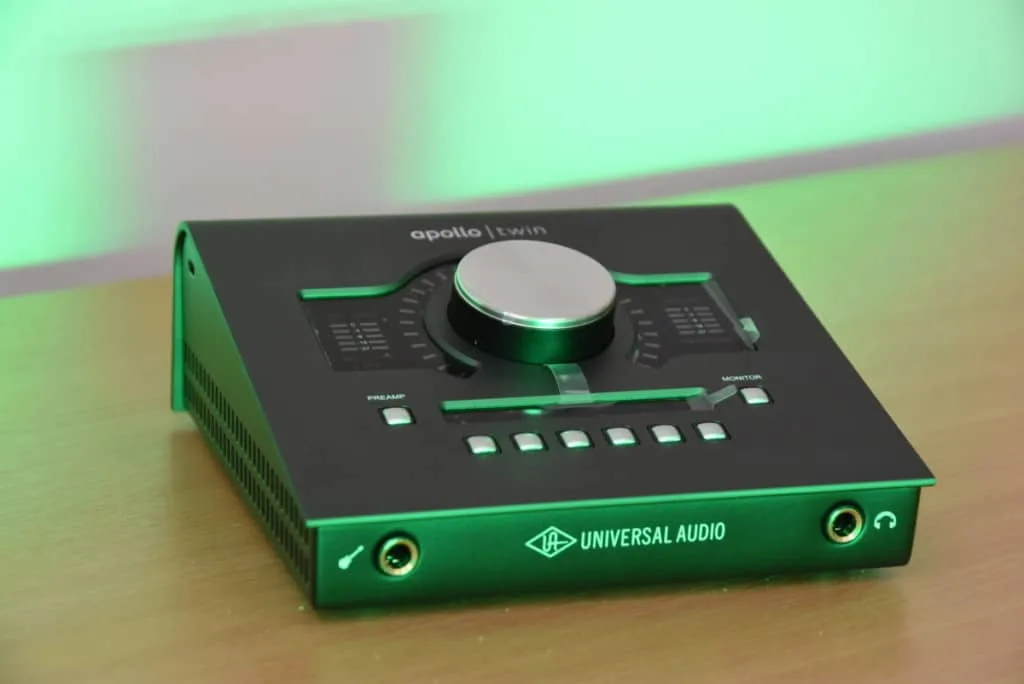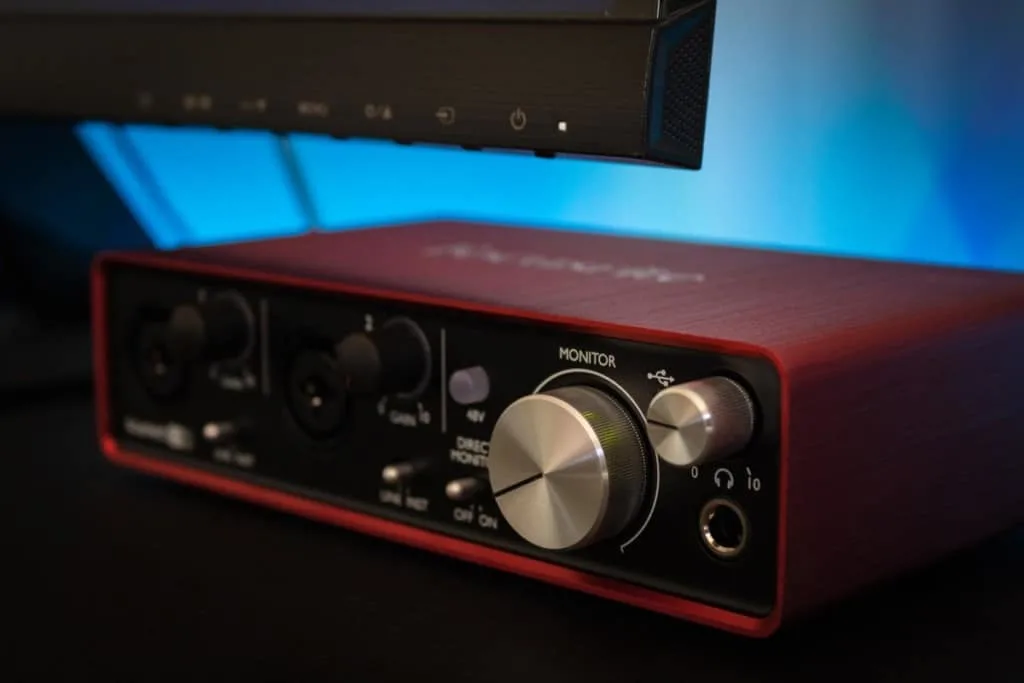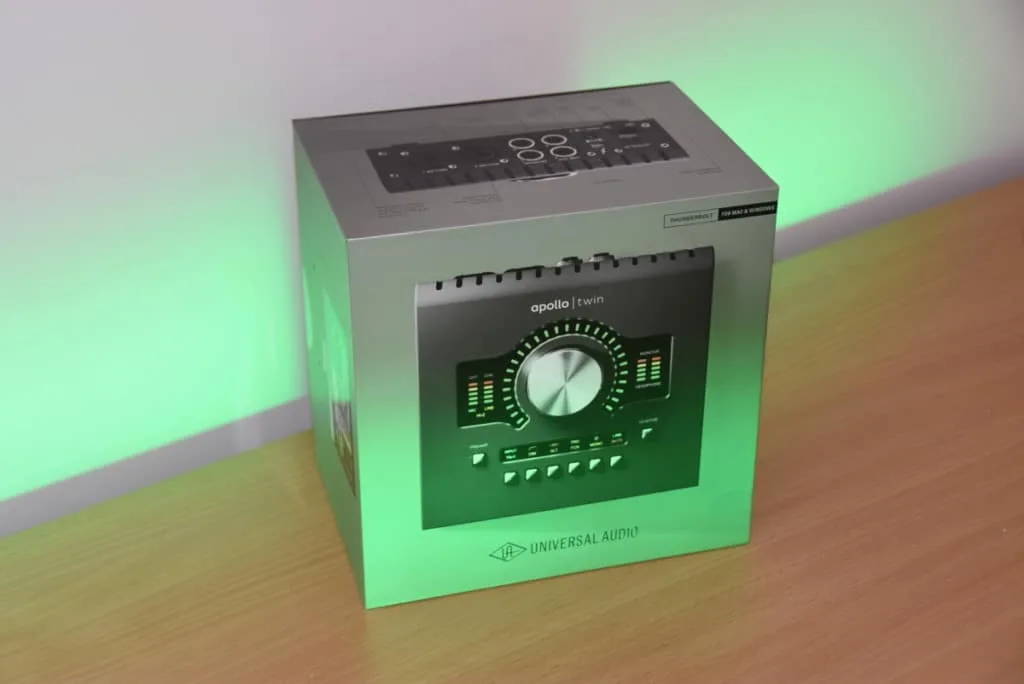Are you a little confused with Audio Interfaces and Mixers? Don’t worry, I’ll explain everything in this article.
Make no mistake because we talk about a generation leap, a clash of opinions between the computer age, and analog recording. I am lucky enough to have my years in the analog recording field, and also some 25 years working with a computer.
After some thorough research and continuous update of my workspace, I can confidently say that I have an informed opinion on the topic. Because of that, and with the aim of pouring all that knowledge into a help vessel, I decided to put this post together and hopefully clear some doubts for people starting out.
So, do you need a mixer as well as an audio interface?
As a general rule, you do not need a mixer and an audio interface to be able to record audio. You can use a hybrid approach, but you will always need an audio interface that converts analog to digital.
That is, as they say, the tip of the iceberg. We are about to reveal the whole body of ice, so jump in, buckle up, and let’s have some fun.

Defining Our Gear
So, you’ve finally made the decision, and you are going to build a nice home studio to make the recordings you always wanted.
Those songs that had been piling up in your notebooks are finally going to be tangible, listenable. You close your eyes and can see immediately just how good your record will sound on Spotify, thousands of cheering fans and success.
It is a beautiful dream we all have plenty of times in our lives, but don’t go so fast, let’s start from the beginning. Let’s define the concepts we are going to further discuss in a couple of paragraphs.
Let’s make the attempt to clear all, and any doubts so we are on the same page all along.
Audio Interfaces
What is an audio interface?
Audio interfaces are state of the art translators transforming all the analog data into digital.
Instruments are analog gear, and you need to translate them into zeros and ones, otherwise, your computer can’t read them. You might be thinking: Yeah, but my thing is hooking up a MIDI controller and triggering all instruments digitally. Well, that’s fantastic for many reasons but still, your speakers are analog and need translation.
What does this all mean?
It means that audio interfaces are the core of studios nowadays; the better the sample quality, the better it’s going to sound.
How so? Very simple, audio interfaces emulate the real sound wave with zeros and ones. The more zeros and ones it can use to mimic the real thing, the closer it will get. This is not only true when recording, but also when listening to a playback.
A great example of this is when you hear any low-quality MP3s (anything below 128 kbps). You can clearly hear the gaps in the curve, in the form of digital noises trying to make up for missing information. Imagine monitoring your mixes this way. It’s like being punished!
So, to cut a long story short, audio interfaces are a definite must for those working with a computer. Using the built-in microphone is not even an option, the standard translator (AKA DAC) in most devices works only translating your voice for a call or any other simple endeavor like that. Putting your hundreds of dollars of equipment through it is wasting your money and time.
Mixers
We are not talking about that marvelous kitchen appliance making our mornings healthy and great. We aren’t speaking about any kind of DJ-oriented mixer with two channels and crossfaders either. We are talking about traditional mixers with several channels, faders, equalizers, compression, and digital effects (sometimes), and, of course, preamps for XLR channels.
Mixers have been the most important tool for studios around the world for decades.
In fact, Dave Grohl made an entire movie based around a legendary mixing console, the Neve 8078 from Sound City Studios (yes, where “Nevermind” was recorded). Here’s a clip of the man himself talking about it. As he points out in the video – “It is the Rolls Royce of recording gear”.
What Does A Mixer Actually Do?
Well, it does what its name implies: It mixes sound to create songs.
Back in the day, you would do everything on the console with a pen and paper and a tape machine. Audio would come from each input, and you would equalize it, compress it, add effects to it, and send it to the tape machine in real-time.
Consider the options on a mixer console, the modern idea of plugins; you had to process the sound before recording and not after as we do now. So, mixers usually have state of the art sound-processing, analog gear built-in; this is their strongest point.
You can check this cool video around minute 3 and see how it used to be done.
I have had my lucky hands on a Neve console before and they do sound amazing.
But aren’t we talking about obsolete technology?
Absolutely, it is old, obsolete technology. What’s the catch then? The catch is that technology rules do not apply to the music-recording world the same way they apply to the rest of the planet.
I mean, the most expensive recording gear you can get was made decades ago! We are still using vacuum tubes in our amplifiers! So, what I am trying to say with this is that simply put, newer is not always better in the world of music recording.
Why You Shouldn’t Get A Mixer!
Let’s go through some of the reasons why you don’t need a mixer and probably shouldn’t have one when taking your first steps.
· Post-production and space-saving mostly – Most mixers (excluding high-end mixers) that have USB connectivity only send the master output from the mixer to the computer, rather than a single track for each instrument (multiple tracks). This means that if after recording you want to, say, make the drums louder you can’t because only the master output has been recorded (i.e. everything).
· Get the same results – As computers and recording software with virtual mixers are now integral to almost all recording set-ups, is generally cheaper and easier to get the same results by just using an interface, of which most are capable of sending multiple individual tracks to a computer thus enabling you to change all the levels and add effects after the recording (post-production) using the software mixer. Also, mixers tend to be quite big, and as having a full mixer isn’t really necessary anymore just using a soundcard can save a lot of space.
These are the main reasons why you probably shouldn’t get a mixer as you are taking your first steps in the world of music recording in your home studio. In fact, let’s face reality: you’re probably never going to record a full drum kit in your living room if you want to keep on living in the same house or even neighborhood!
What Are The Benefits Of A Hybrid Approach?
After seeing why you don’t need a mixer, let’s discuss briefly why you could benefit from adding one to your system. There are several things studio consoles do to audio that can take your productions to the next level. In fact, most of the music you’ll hear in certain genres went through the guts of a mixing console.
- Color – You’ll hear this word a lot, it is part of the music production and recording jargon. What do we exactly mean by color? It is a mixture of warmth and tone that is not present in most modern recording equipment. I mean, most audio interfaces come with built-in microphone preamps, but they are very basic.
- Equalizers – I know that you can EQ audio from the DAW and undo it as many times as you like. Does it sound the same to digitally shape a waveform than transforming it analogically? It doesn’t. You can add different flavors and avoid certain frequencies. For example, you can easily cut the low lows on a piano before it hits the DAW making your post-production work easier.
- Faders – If you are someone transitioning from live audio mixing to recording, you’ll greatly benefit from them. There is something about adjusting levels manually that is different from doing it with the mouse. The fine touch of our fingertips usually beats the movement ratio proposed by digital platforms.
- Compression and digital effects – Once you’ve got your hand on compression and you are familiar with the compressor on your mixer, you’ll reduce postproduction time hugely. The one catch with adding compression and digital effects before audio hits the DAW is that you need to do it right or you’ll ruin the take because there is no possible undo. Once you learn to dial that in and nail it every time, you’ll reduce your working hours in the studio.
This hybrid approach idea doesn’t end here because there is another amazing piece of gear some studios still use today that is ground-breaking ancient technology, which is a tape recorder.
It can be in the shape of a digital tape recorder, AKA ADAT, or a regular 2-inch open-tape machine. What this does is add a ton of low end and natural tape compression to anything you record.
For example, when I record rock bands, I always record drums and bass in a friend’s studio with his open-tape machine. The result is a huge bass and a huge drum sound. Then, we go back to my studio and lay down everything else through my console down to Pro Tools.
When Is The Right Time To Bring Analog Gear To The Studio?
This is a great question I get a lot, especially from advanced students in recording. I am always willing to be the “graduate speaking to students”. Most of them have been studying for a couple of years and are fine-tuning their ears. This ultimately leads to changing your studio gear to bring in some old-school stuff. But when is it wise to do it?
I always start my answer by saying: “when you don’t have any other choice, and you can afford it”.
Also, I tell them how in the world of “music recording for a living” you are always making numbers to see if it’s worth it to buy it, or you can just rent it. Just like I do with my friend Julia and her studio for the open-tape machine, you can rent mostly anything. Once you captured the audio and translated it to the DAW, then you can work digitally until the mastering moment.
Recording audio using the best tools on the market is the best way to have a great sounding piece. Always bear in mind that a song is like a building; you need to put it together piece by piece. The stronger the foundations, the better-quality materials, and the more skilled workers, the better the result will be.
So, to answer the above question, it is the right time when you can afford it and have the room for it.
I know I probably will never buy a Fostex 2” tape machine because I don’t have the room and don’t use it all that often. Thus, I will keep on visiting Julia with new bands and sharing my profits and a cup of tea with an old friend.

Number Of Inputs Vs Quality Of Sound
Anyone can buy a Focusrite Scarlett 2i2 and make music at home in their pajamas and fluffy “the Hulk” slippers.
It will likely sound very much like all the other music made using the same tools. Don’t get me wrong, the Scarlett sounds terrific and with two inputs, you can record a singer-songwriter in a heartbeat. This setup will be good for you for a while but eventually, your ears will get more demanding. We all listen to music every day and thus, you’ll want to emulate “more expensive” sounds.
Take a look at my article on how to get started with an audio interface here.
In my opinion, there is a lot of confusion when talking about mixers for home studios.
- It’s not the number of channels you want the mixer for, but the quality of sound it can generate.
Buying a not-so-expensive mixer will allow you to either record through it before hitting the audio interface or use it as an external equalizer.
You can record with your computer, put it through the mixer, and then go back to the computer. The effect analog equalizers and gain stages have on audio waveforms is huge. Don’t just take my word for it, here’s a clip of rock legend John Frusciante (Red Hot Chili Peppers) advising a fan to use analog equalizers to record music on an inexpensive Mackie console.
Better Preamps, Better Audio Interfaces
If you want to spend more money than you have on the Scarlett and change the sound of your recordings drastically, you can buy another audio interface as well.
You will want one with better preamps, more options, and better overall sound. For example, jumping from the Scarlett to a Universal Audio Apollo is a huge leap in sound and price. You’ll still have two channels, but far better sound. Ultimately, all we do in a studio environment (home or not) is to have better-sounding productions.
- An analog mixer will help, and a top-notch audio interface will help too. If you combine them, well, then you are playing in the big league!

Conclusion
Before finishing this piece, I wanted to share with you a funny anecdote about this topic.
We have to go some years back to about 2010. I was working as the main engineer on a record by a band that played ska mixed with punk (something like the Mighty Mighty Bosstones). They were nine people in a band and had a leader who was the bass player.
He was into music production and would go on endless arguments with the producer who was as knowledgeable as he was.
One fine day, the bass player brought in the demos for the songs to prove to the producer that a trumpet line was a keeper. When he hit play, I was completely blown away by the sound; it was really good!
I immediately asked him just how he did it and he smiled and said he turned his old Tascam Portastudio into a recording console and would put every microphone through those preamps and then into the computer.
To cut a long story short, he went back home, brought the Tascam and much of the album was cut using the preamps on the Tascam because it fitted the style much better than the state-of-the-art console in the studio which we only used for the drums (because of the number of inputs).
This little anecdote is to show you two things: first, that sound is always paramount regardless of the tools you use to get it; there are no rules. You should always focus your efforts on sounding better; the bigger the palette of colors, the more paintings you can make with it, so adding analog gear to the studio and trying it out never hurts.
Second, that more expensive doesn’t always mean better. Grow your ear (before you gear) and use them as a tool to understand what comes next in your gear-acquisition rally.
Take a look at this article on the best audio interface for live performances. You can read it here.
Take every step when you outgrew the previous and you’ll build on solid foundations.
Happy recording!
